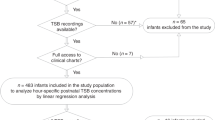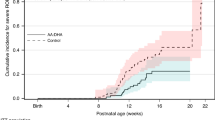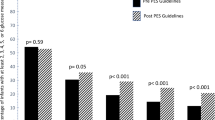Abstract
Objective:
We enterally administered a 14-day course of 3-mercapto-D-valine (D-penicillamine) to five extremely low birth weight (ELBW) neonates, as a step toward assessing this therapy as a means of reducing the incidence or severity of retinopathy of prematurity (ROP).
Methods:
The study drug (100 mg/ml) was given by nasogastric tube at a dose of 100 mg/k every 8 h for three days, and then 50 mg/k once per day for 11 additional days. Logbooks were maintained by the bedside nurses to record signs of possible immediate intolerance. Laboratory tests assessed hepatic, renal, and hematologic toxicity. ROP was scored according to the ICROP guidelines. Comparisons were with a cohort of 139 consecutive recent neonates of the same birth weight and gestational age range.
Results:
Five neonates were enrolled in the study, and all received the full course of study drug as planned. Signs of immediate intolerance of the study drug were not observed in any. The study patients did not have a higher incidence, than that of the cohort group, in creatinine elevation, thrombocytopenia, neutropenia, hyperbilirubinemia, or abnormal liver function test. Four of the five had no ROP and one developed transient stage 1, compared with a 54% occurrence of ROP in the cohort.
Conclusions:
It is feasible to enterally administer a 14-day course of 3-mercapto-D-valine to ELBW neonates and the suspension appears to be well tolerated. These results suggest that phase II safety and preliminary efficacy trials can be undertaken.
This is a preview of subscription content, access via your institution
Access options
Subscribe to this journal
Receive 12 print issues and online access
$259.00 per year
only $21.58 per issue
Buy this article
- Purchase on Springer Link
- Instant access to full article PDF
Prices may be subject to local taxes which are calculated during checkout
Similar content being viewed by others
References
Phelps DL, ETROP Cooperative Group. The early treatment for retinopathy of prematurity study: better outcomes, changing strategy. Pediatrics 2004; 114: 490–491.
Haines L, Fielder AR, Baker H, Wilkinson AR . UK population based study of severe retinopathy of prematurity: screening, treatment, and outcome. Arch Dis Child Fetal Neonatal Ed 2005; 90: F240–F244.
Aiello LP . Vascular endothelial growth factor and the eye – past, present, and future. Arch Ophthalmol 1996; 114: 1252–1254.
Aiello LP . Vascular endothelial growth factor. 20th-century mechanisms, 21st-century therapies. Investig Ophthalmol Vis Sci 1997; 38: 1647–1652.
Polytarchou C, Papadimitriou E . Antioxidants inhibit angiogenesis in vivo through down-regulation of nitric oxide synthase expression and activity. Free Radic Res 2004; 38: 501–508.
Stone JS, Collins T . The role of hydrogen peroxide in endothelial proliferative responses. Endothelium 2002; 9: 231–238.
Ushio-Fukai M, Alexander RW . Reactive oxygen species as mediators of angiogenesis signaling: role of NAD(P)H oxide. Mol Cell Biochem 2004; 264: 85–97.
Hunt JT, Lee VG, Liu EC, Moreland S, McMullen D, Webb ML et al. Control of peptide disulfide regioisomer formation by mixed cysteine-penicillamine bridges. Int J Peptide Protein Res 1993; 42: 249–258.
Matsubara T, Saura R, Hirohata K . Inhibition of human endothelial cell proliferation in vitro and neovasularization in vivo by D-penicillamine. J Clin Invest 1989; 83: 158–167.
Yoshida D, Ikeda Y, Nakazawa S . Copper chelation inhibits tumor angiogenesis in the experimental 9L gliosarcoma model. Neurosurgery 1995; 37: 287–292.
Pietraforte D, Mallozzi C, Scorza G, Minetti M . Role of thiols in the targeting of S-nitroso thiols to red blood cells. Biochemistry 1995; 34: 7177–7185.
McBrien NA, Norton TT . Prevention of collagen crosslinking increases form-deprivation myopia in tree shrew. Exp Eye Res 1994; 59: 475–486.
Siemeister G, Schnurr B, Mohrs K, Schachtele C, Marme D, Martiny-aron G . Expression of biologically active isoforms of the tumor angiogenesis factor VEGF in Escherichia coli. Biochem Biophys Res Commun 1996; 222: 249–255.
Lakatos L, Kover B, Oroszlan GY, Vekerdy ZS . Penicillamine therapy in ABO hemolytic disease of the newborn infant. Eur J Pediatr 1976; 123: 133–137.
Lakatos L, Hatvani I, Oroszlan G, Balla G, Karmazsin L, Alaka O et al. Controlled trial of D-penicillamine to prevent retinopathy of prematurity. Acta Paediatr Hungar 1986; 27: 47–56.
Phelps DL, Lakatos L, Watts JL . Penicillamine for preventing retinopathy of prematurity in preterm infants. Cochrane Database Syst Rev 2001; 1: CD001073.
An International Committee for the Classification of Retinopathy of Prematurity. The International Classification of Retinopathy of Prematurity Revisited. Arch Ophthalmol 2005; 123: 991–995.
Good WV, Hardy RJ . The multicenter study of early treatment for retinopathy of prematurity (ETROP). Ophthalmology 2001; 108: 1013–1014.
Gilbert C, Fielder A, Gordillo L, Guinn G, Semiglia R, Visintin P et al. Characteristics of infants with severe retinopathy of prematurity in countries with low, moderate, and high levels of development: Implication for screening programs. Pediatrics 2005; 115: e518–e525.
Phelps DL, Watts JL . Early light reduction to prevent retinopathy of prematurity in very low birth weight infants. In: The Cochrane Library, Issue 1, 1997. Oxford: Update Software.
STOP-ROP Multicenter Trial. Supplemental therapeutic oxygen for prethrehold retinopathy of prematurity (STOP-ROP), a randomized, controlled trial. I: primary outcomes. Pediatrics 2000; 105: 295–310.
Saugstad OD . Oxygen for newborns: How much is too much? J Perinatol 2005; 25 (Suppl 2): S45–S49.
Alva JA, Inuela-Arispe ML . Notch signaling in vascular morphogenesis. Curr Op Hematol 2004; 11: 278–293.
Lakatos L, Kover B, Vekerdy ZS, Dvoracsdk E . D-penicillamine therapy in neonatal jaundice: comparison with phototherapy. Acta Paediatr Acad Sci Hungar 1976; 17: 93–102.
Koranyi G, Kovacs J, Voros I . Penicillamine treatment of hyperbilirubinemia in preterm infants. Acta Paediatr Acad Sci Hungar 1978; 19: 9–16.
Drosos AA, Geogriou P, Politi EN, Voulgari PV . D-penicillamine in early rheumatoid arthritis. Clin Exper Rheumatol 1997; 15: 580.
Pinter R, Hogge WA, McPherson E . Infant with severe penicillamine embryopathy born to a woman with Wilson disease. Am J Med Genet A 2004; 128: 294–298.
Oga M, Matsui N, Anai T, Yoshimatsu J, Inoue I, Miyakawa I . Copper disposition of the fetus and placenta in a patient with untreated Wilson's disease. Am J Obstet Gynecol 1993; 169: 196–198.
Acknowledgements
We thank Dr David A Auerbach, Director of Neonatology, Arnold Palmer Hospital for Women and Children, Orlando, FL, who served as Chair of the DSMB. We also thank Dr Dale Phelps, Professor of Pediatrics and Ophthalmology, University of Rochester School of Medicine and Dentistry, Dr Lajos Lakatos, Professor of Pediatrics, Kenezy County Hospital, Debrecen, Hungary, and Justin Brown of the Thrasher Research Fund for helpful discussions about this project. We also thank Dr Carmen DeBellas and Alison Rodgers of the FDA Division of Anti-Inflammatory, Analgesic, and Ophthalmic Drug Products, for their assistance and suggestions. We also thank Faith A Smith, RN, BSN, for her encouragement, and the NICU nurses of the McKay-Dee Hospital Center, Ogden, Utah for their valuable assistance with the study. Supported by a Grant from the Thrasher Research Fund, Salt Lake City, UT, USA.
Author information
Authors and Affiliations
Corresponding author
Rights and permissions
About this article
Cite this article
Christensen, R., Alder, S., Richards, S. et al. A pilot trial testing the feasibility of administering D-penicillamine to extremely low birth weight neonates. J Perinatol 26, 120–124 (2006). https://doi.org/10.1038/sj.jp.7211440
Received:
Revised:
Accepted:
Published:
Issue Date:
DOI: https://doi.org/10.1038/sj.jp.7211440
Keywords
This article is cited by
-
D-Penicillamine administration and the incidence of retinopathy of prematurity
Journal of Perinatology (2007)



